Dubbed CoolCube, the French research centre has developed a device scale-stacking technology for complex system-on-chips such as mobile processors which is why Qualcomm is collaborating with Leti.
The technology combines a stacking process with low-temperature transistor processing, which according to Leti allows vertical integration of a transistor without degrading the performance of the transistors beneath or the metal interconnects between the layers of the transistors.
"It also enables designers to include back-side imagers in chips, and co-integration of NEMS in a CMOS fabrication process," said Leti.
Leti CEO Marie Semeria believes the involvement of Qualcomm Technologies in the CoolCube development sends "a strong signal to the microelectronics community.”
“Together, we aim to build a complete ecosystemwith foundries, equipment suppliers, and EDA and design houses to assemble all the pieces of the puzzle and move the technology into the product-qualification phase,” said Semeria.
The companies are looking for multi-party collaboration in the programme to drive adoption of the technology.
The two organisations have been working on the technology since 2014.
Karim Arabi, vice president of engineering, Qualcomm, writes:
“The Qualcomm Technologies and Leti teams have demonstrated the potential of this technology for designing and fabricating high-density and high-performance chips for mobile devices. We are optimistic that this technology could address some of the technology scaling issues.”
12:55 AM
A blocked or private caller withholds their name and number from Caller ID services. Retrieving a blocked caller’s ID will be difficult without going to extreme lengths such as paying for a special service or planning to take legal action. In most cases, you won’t be able to call back a blocked number. Instead, your phone company or local law enforcement agency will be the only parties that will receive a blocked caller’s information. If you are receiving many of these calls and want to stop them, you can investigate the number by using call tracing services or special smartphone applications. Or learn to block a specific or all private numbers.
1
Trace the call by dialing *57 immediately after ending a blocked or private call. This should only be done under circumstances where blocked or private calls are threatening or obscene. Your phone company will be notified of the call and will record their number and the date and time of the call. You are then expected to carry out legal action by notifying the police or any law enforcement agency about the call you traced by letting them know the date and time of the call. However, your phone company will only release the blocked or private caller's number to a law enforcement agency. A recording will play to let you know the call has been traced and is being kept in your phone company's records, as well as any further instructions on how to pursue legal action against the caller.You must answer the call for Call Trace to work. Even if the caller hangs up the moment you pick up, tracing the call is still possible as long as a connection was made.Some phone companies and law enforcers will require you to trace the call at least three times successfully before they can take action.[1]Most phone companies will charge you a small fee whether or not you choose to report the call to law enforcements. This fee can cost up to $10 per call.Call tracing should only be used for calls that are malicious, obscene, or harassing in nature.
2
Opt to add Anonymous Call Rejection to your list of phone services by picking up your receiver and dialing *77. Since it is so difficult to find a blocked caller’s ID, then it might useful for you to reject all blocked calls in the future from calling you. The feature will be activated and all anonymous, private, or blocked numbers will be rejected. To deactivate this feature, simply dial *87 and hang up.[2]Blocked callers will receive a message to hang up and unblock their number before they can successfully reach you.
3
Attempt to call back the number by dialling *69. This activates Call Return and a voice recording will provide you with the number of your last caller, the date and time of the call, and the option to call back. Call Return can only gather information from the last person that called you.[3]Unfortunately, this does not work for blocked or private calls. If the number is blocked or private, an error message will notify you that your provider could not gather data from the caller.If you have Anonymous Call Rejection activated and still receive malicious or obscene calls, you can now use Call Return to retrieve their number.This service may need to be activated by your phone company so call your provider to see if they offer Call Return services.You don't have to pick up the call to use Call Return. Some malicious callers or telemarketers will call around the same time of the day, so you can always wait for the phone to ring to the end, and then use Call Return to retrieve their information.
4
If all else fails, ask the person for their phone number or information. Request that telemarketers place you on their “Do Not Call” list. Most telemarketers need verbal confirmation to put you on their "Do Not Call" list or they will continue to call you until you either buy their services or tell them not to.It may be difficult to speak to or reason with some callers. Don't give out your personal information and don't let the phone call go beyond your comfort level. Remember, you can hang up to escape the situation.
5
Record all interactions with a blocked caller and give them to your local law enforcer. If there is a clear pattern between the phone calls you’re receiving, law enforcement will be more likely to get involved. Record dates, times, and the manner of all phone calls from the blocked number.If you choose to press charges, this can be an expensive and long lasting ordeal.Be prepared to take difficult actions such as changing your phone number to protect yourself or following instructions given to you by your law enforcement in order to trace the call. This might mean having to interact with the blocked caller or keep them on the line for an extended period of time to trace them.
Method Two of Three:
Unmasking Numbers on Your SmartphoneEdit
1
Learn about unblocking services and decide if it's right for you by visiting their websites and reading reviews. There are several unblocking services you can download on your smartphone like Trapcall and the Caller Identification App (CIA). Most of these services cost money to activate and will work on most smartphone devices. They can unmask blocked or private calls, records your calls, and help blacklist any unwanted callers.Trapcall: Trapcall is a subscription service with a number of plans that offer different features. The most basic plan will help you reveal a blocked caller’s phone number as well as other basic information associated with the number.[4]Caller Identification App: Although this service does not unmask blocked phone calls, it can help you block unwanted numbers as well as retrieve information about the caller from public databases.[5]
2
Set up your smartphone to use Trapcall or any other unmasking service app. This means downloading their app on your smartphone device by searching and installing it from your smartphone's app store. You may need to purchase the app or buy a subscription service to access their unmasking services.The service should walk you through the steps on how to set up your phone. For example, setting up Trapcall mostly consists of dialing a few numbers and hitting send. Each phone has a particular set of numbers that is specific to your phone number, carrier provider, and location, and is provided to you by Trapcall on their website. They will then ask if you'd like to test out your phone and call you with an automated number to complete the test.
3
Unmask a blocked number. Each service will have a different set of instructions on how to unmask a blocked call. Most services will require you to wait for the blocked or private caller to call you and then hit "Decline" or "Reject" on your smartphone. And a few moments later, another call or message will come in with the blocked number's ID exposed.You can either call the blocked number right away, view their information or blacklist them from being able to call you.
1
Trace the call by dialing *57 immediately after ending a blocked or private call. This should only be done under circumstances where blocked or private calls are threatening or obscene. Your phone company will be notified of the call and will record their number and the date and time of the call. You are then expected to carry out legal action by notifying the police or any law enforcement agency about the call you traced by letting them know the date and time of the call. However, your phone company will only release the blocked or private caller's number to a law enforcement agency. A recording will play to let you know the call has been traced and is being kept in your phone company's records, as well as any further instructions on how to pursue legal action against the caller.You must answer the call for Call Trace to work. Even if the caller hangs up the moment you pick up, tracing the call is still possible as long as a connection was made.Some phone companies and law enforcers will require you to trace the call at least three times successfully before they can take action.[1]Most phone companies will charge you a small fee whether or not you choose to report the call to law enforcements. This fee can cost up to $10 per call.Call tracing should only be used for calls that are malicious, obscene, or harassing in nature.
2
Opt to add Anonymous Call Rejection to your list of phone services by picking up your receiver and dialing *77. Since it is so difficult to find a blocked caller’s ID, then it might useful for you to reject all blocked calls in the future from calling you. The feature will be activated and all anonymous, private, or blocked numbers will be rejected. To deactivate this feature, simply dial *87 and hang up.[2]Blocked callers will receive a message to hang up and unblock their number before they can successfully reach you.
3
Attempt to call back the number by dialling *69. This activates Call Return and a voice recording will provide you with the number of your last caller, the date and time of the call, and the option to call back. Call Return can only gather information from the last person that called you.[3]Unfortunately, this does not work for blocked or private calls. If the number is blocked or private, an error message will notify you that your provider could not gather data from the caller.If you have Anonymous Call Rejection activated and still receive malicious or obscene calls, you can now use Call Return to retrieve their number.This service may need to be activated by your phone company so call your provider to see if they offer Call Return services.You don't have to pick up the call to use Call Return. Some malicious callers or telemarketers will call around the same time of the day, so you can always wait for the phone to ring to the end, and then use Call Return to retrieve their information.
4
If all else fails, ask the person for their phone number or information. Request that telemarketers place you on their “Do Not Call” list. Most telemarketers need verbal confirmation to put you on their "Do Not Call" list or they will continue to call you until you either buy their services or tell them not to.It may be difficult to speak to or reason with some callers. Don't give out your personal information and don't let the phone call go beyond your comfort level. Remember, you can hang up to escape the situation.
5
Record all interactions with a blocked caller and give them to your local law enforcer. If there is a clear pattern between the phone calls you’re receiving, law enforcement will be more likely to get involved. Record dates, times, and the manner of all phone calls from the blocked number.If you choose to press charges, this can be an expensive and long lasting ordeal.Be prepared to take difficult actions such as changing your phone number to protect yourself or following instructions given to you by your law enforcement in order to trace the call. This might mean having to interact with the blocked caller or keep them on the line for an extended period of time to trace them.
Method Two of Three:
Unmasking Numbers on Your SmartphoneEdit
1
Learn about unblocking services and decide if it's right for you by visiting their websites and reading reviews. There are several unblocking services you can download on your smartphone like Trapcall and the Caller Identification App (CIA). Most of these services cost money to activate and will work on most smartphone devices. They can unmask blocked or private calls, records your calls, and help blacklist any unwanted callers.Trapcall: Trapcall is a subscription service with a number of plans that offer different features. The most basic plan will help you reveal a blocked caller’s phone number as well as other basic information associated with the number.[4]Caller Identification App: Although this service does not unmask blocked phone calls, it can help you block unwanted numbers as well as retrieve information about the caller from public databases.[5]
2
Set up your smartphone to use Trapcall or any other unmasking service app. This means downloading their app on your smartphone device by searching and installing it from your smartphone's app store. You may need to purchase the app or buy a subscription service to access their unmasking services.The service should walk you through the steps on how to set up your phone. For example, setting up Trapcall mostly consists of dialing a few numbers and hitting send. Each phone has a particular set of numbers that is specific to your phone number, carrier provider, and location, and is provided to you by Trapcall on their website. They will then ask if you'd like to test out your phone and call you with an automated number to complete the test.
3
Unmask a blocked number. Each service will have a different set of instructions on how to unmask a blocked call. Most services will require you to wait for the blocked or private caller to call you and then hit "Decline" or "Reject" on your smartphone. And a few moments later, another call or message will come in with the blocked number's ID exposed.You can either call the blocked number right away, view their information or blacklist them from being able to call you.
11:19 PM
Electronic engineering has many subfields. This section describes some of the most popular subfields in electronic engineering; although there are engineers who focus exclusively on one subfield, there are also many who focus on a combination of subfields.
Signal processing deals with the analysis and manipulation of signals. Signals can be either analog, in which case the signal varies continuously according to the information, ordigital, in which case the signal varies according to a series of discrete values representing the information.
For analog signals, signal processing may involve the amplification and filtering of audio signals for audio equipment or the modulation and demodulation of signals fortelecommunications. For digital signals, signal processing may involve the compression, error checking and error detection of digital signals.
Telecommunications engineering deals with the transmission of information across a channel such as a co-axial cable, optical fiber or free space.
Transmissions across free space require information to be encoded in a carrier wave in order to shift the information to a carrier frequency suitable for transmission, this is known as modulation. Popular analog modulation techniques include amplitude modulation and frequency modulation. The choice of modulation affects the cost and performance of a system and these two factors must be balanced carefully by the engineer.
Once the transmission characteristics of a system are determined, telecommunication engineers design the transmitters and receivers needed for such systems. These two are sometimes combined to form a two-way communication device known as a transceiver. A key consideration in the design of transmitters is their power consumption as this is closely related to their signal strength. If the signal strength of a transmitter is insufficient the signal's information will be corrupted by noise.
Control engineering has a wide range of applications from the flight and propulsion systems of commercial airplanes to the cruise control present in many modern cars. It also plays an important role in industrial automation.
Control engineers often utilize feedback when designing control systems. For example, in a car with cruise control the vehicle's speed is continuously monitored and fed back to the system which adjusts the engine's power output accordingly. Where there is regular feedback, control theory can be used to determine how the system responds to such feedback.
Instrumentation engineering deals with the design of devices to measure physical quantities such as pressure, flow and temperature. These devices are known asinstrumentation.
The design of such instrumentation requires a good understanding of physics that often extends beyond electromagnetic theory. For example, radar guns use the Doppler effectto measure the speed of oncoming vehicles. Similarly, thermocouples use the Peltier–Seebeck effect to measure the temperature difference between two points.
Often instrumentation is not used by itself, but instead as the sensors of larger electrical systems. For example, a thermocouple might be used to help ensure a furnace's temperature remains constant. For this reason, instrumentation engineering is often viewed as the counterpart of control engineering.
Computer engineering deals with the design of computers and computer systems. This may involve the design of new computer hardware, the design of PDAs or the use of computers to control an industrial plant. Development of embedded systems—systems made for specific tasks (e.g., mobile phones)—is also included in this field. This field includes the micro controller and its applications. Computer engineers may also work on a system's software. However, the design of complex software systems is often the domain of software engineering, which is usually considered a separate discipline.
VLSI design engineering VLSI stands for very large scale integration. It deals with fabrication of ICs and various electronics components.
Typical undergraduate syllabus[edit]
Apart from electromagnetics and network theory, other items in the syllabus are particular to electronics engineering course. Electrical engineering courses have other specialisms such as machines, power generation and distribution. This list does not include the extensive engineering mathematics curriculum that is a prerequisite to a degree.[7][8]
Electromagnetics[edit]
Elements of vector calculus: divergence and curl; Gauss' and Stokes' theorems, Maxwell's equations: differential and integral forms. Wave equation, Poynting vector. Plane waves: propagation through various media; reflection and refraction; phase and group velocity; skin depth. Transmission lines: characteristic impedance; impedance transformation; Smith chart; impedance matching; pulse excitation. Waveguides: modes in rectangular waveguides; boundary conditions; cut-off frequencies; dispersion relations. Antennas: Dipole antennas; antenna arrays; radiation pattern; reciprocity theorem, antenna gain.[9][10]
Network analysis[edit]
Network graphs: matrices associated with graphs; incidence, fundamental cut set and fundamental circuit matrices. Solution methods: nodal and mesh analysis. Network theorems: superposition, Thevenin and Norton's maximum power transfer, Wye-Delta transformation.[11] Steady state sinusoidal analysis using phasors. Linear constant coefficient differential equations; time domain analysis of simple RLC circuits, Solution of network equations using Laplace transform: frequency domain analysis of RLC circuits. 2-port network parameters: driving point and transfer functions. State equations for networks.[12]
Electronic devices and circuits[edit]
Electronic devices: Energy bands in silicon, intrinsic and extrinsic silicon. Carrier transport in silicon: diffusion current, drift current, mobility, resistivity. Generation and recombination of carriers. p-n junction diode, Zener diode, tunnel diode, BJT, JFET, MOS capacitor, MOSFET, LED, p-i-n and avalanche photo diode, LASERs. Device technology: integrated circuit fabrication process, oxidation, diffusion, ion implantation, photolithography, n-tub, p-tub and twin-tub CMOS process.[13][14]
Analog circuits: Equivalent circuits (large and small-signal) of diodes, BJTs, JFETs, and MOSFETs. Simple diode circuits, clipping, clamping, rectifier. Biasing and bias stability of transistor and FET amplifiers. Amplifiers: single-and multi-stage, differential, operational, feedback and power. Analysis of amplifiers; frequency response of amplifiers. Simple op-amp circuits. Filters. Sinusoidal oscillators; criterion for oscillation; single-transistor and op-amp configurations. Function generators and wave-shaping circuits, Power supplies.[15]
Digital circuits: Boolean functions (NOT, AND, OR, XOR,...). Logic gates digital IC families (DTL, TTL, ECL, MOS, CMOS). Combinational circuits: arithmetic circuits, code converters, multiplexers and decoders. Sequential circuits: latches and flip-flops, counters and shift-registers. Sample and hold circuits, ADCs, DACs. Semiconductor memories.Microprocessor 8086: architecture, programming, memory and I/O interfacing.[16][17]
Signals and systems[edit]
Definitions and properties of Laplace transform, continuous-time and discrete-time Fourier series, continuous-time and discrete-time Fourier Transform, z-transform. Sampling theorems. Linear Time-Invariant (LTI) Systems: definitions and properties; causality, stability, impulse response, convolution, poles and zeros frequency response, group delay, phase delay. Signal transmission through LTI systems. Random signals and noise: probability, random variables, probability density function, autocorrelation, power spectral density, function analogy between vectors & functions.[18][19]
Control systems[edit]
Basic control system components; block diagrammatic description, reduction of block diagrams — Mason's rule. Open loop and closed loop (negative unity feedback) systems and stability analysis of these systems. Signal flow graphs and their use in determining transfer functions of systems; transient and steady state analysis of LTI control systems and frequency response. Analysis of steady-state disturbance rejection and noise sensitivity.
Tools and techniques for LTI control system analysis and design: root loci, Routh-Hurwitz stability criterion, Bode and Nyquist plots. Control system compensators: elements of lead and lag compensation, elements of Proportional-Integral-Derivative controller (PID). Discretization of continuous time systems using Zero-order hold (ZOH) and ADCs for digital controller implementation. Limitations of digital controllers: aliasing. State variable representation and solution of state equation of LTI control systems. Linearization of Nonlinear dynamical systems with state-space realizations in both frequency and time domains. Fundamental concepts of controllability and observability for MIMO LTI systems. State space realizations: observable and controllable canonical form. Ackermann's formula for state-feedback pole placement. Design of full order and reduced order estimators.[20][21]
Communications[edit]
Analog communication systems: amplitude and angle modulation and demodulation systems, spectral analysis of these operations, superheterodyne noise conditions.
Digital communication systems: pulse code modulation (PCM), Differential Pulse Code Modulation (DPCM), Delta modulation (DM), digital modulation schemes-amplitude, phase and frequency shift keying schemes (ASK, PSK, FSK), matched filter receivers, bandwidth consideration and probability of error calculations for these schemes, GSM,TDMA.[22][23]
Education and training
Electronics engineers typically possess an academic degree with a major in electronic engineering. The length of study for such a degree is usually three or four years and the completed degree may be designated as a Bachelor of Engineering, Bachelor of Science, Bachelor of Applied Science, or Bachelor of Technology depending upon the university. Many UK universities also offer Master of Engineering (MEng) degrees at undergraduate level.
The degree generally includes units covering physics, chemistry, mathematics, project management and specific topics in electrical engineering. Initially such topics cover most, if not all, of the subfields of electronic engineering. Students then choose to specialize in one or more subfields towards the end of the degree.
Some electronics engineers also choose to pursue a postgraduate degree such as a Master of Science (MSc), Doctor of Philosophy in Engineering (PhD), or an Engineering Doctorate (EngD). The master's degree is being introduced in some European and American Universities as a first degree and the differentiation of an engineer with graduate and postgraduate studies is often difficult. In these cases, experience is taken into account. The master's degree may consist of either research, coursework or a mixture of the two. The Doctor of Philosophy consists of a significant research component and is often viewed as the entry point to academia.
In most countries, a bachelor's degree in engineering represents the first step towards certification and the degree program itself is certified by a professional body. After completing a certified degree program the engineer must satisfy a range of requirements (including work experience requirements) before being certified. Once certified the engineer is designated the title of Professional Engineer (in the United States, Canada and South Africa), Chartered Engineer or Incorporated Engineer (in the United Kingdom, Ireland, India and Zimbabwe), Chartered Professional Engineer (in Australia and New Zealand) or European Engineer (in much of the European Union).
Fundamental to the discipline are the sciences of physics and mathematics as these help to obtain both a qualitative and quantitative description of how such systems will work. Today most engineering work involves the use of computers and it is commonplace to use computer-aided design and simulation software programs when designing electronic systems. Although most electronic engineers will understand basic circuit theory, the theories employed by engineers generally depend upon the work they do. For example,quantum mechanics and solid state physics might be relevant to an engineer working on VLSI but are largely irrelevant to engineers working with macroscopic electrical systems.
Professional bodies of note for electrical engineers include the Institute of Electrical and Electronics Engineers (IEEE) and the Institution of Electrical Engineers (IEE) (now renamed the Institution of Engineering and Technology or IET). Member of the Institution of Engineering and Technology (MIET) is recognised in Europe as Electrical and computer (technology) engineer. The IEEE claims to produce 30 percent of the world's literature in electrical/electronic engineering, has over 370,000 members, and holds more than 450 IEEE sponsored or cosponsored conferences worldwide each year.
https://en.wikipedia.org/wiki/Electronic_engineering
3:08 PM

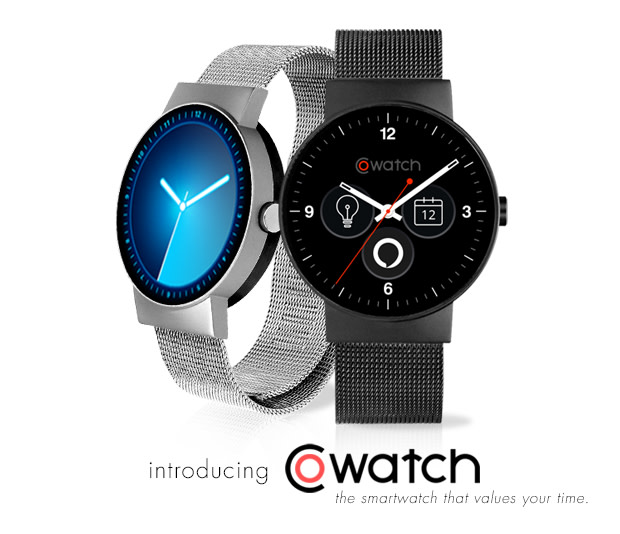
With a design philosophy that marries style with accessibility, CoWatch packs next-level features, while being one of the most affordable smartwatches on the market. As the world's first smartwatch to integrate Alexa, Amazon's advanced voice-recognition software, CoWatch is your perfect companion into the future.

Take the leap with the next generation of smartwatch technology. 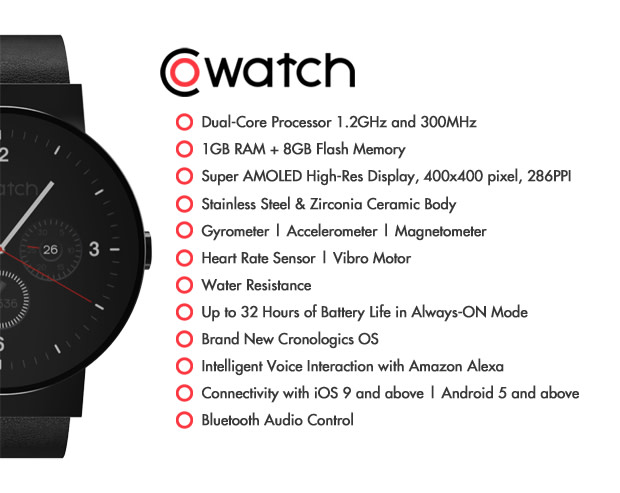





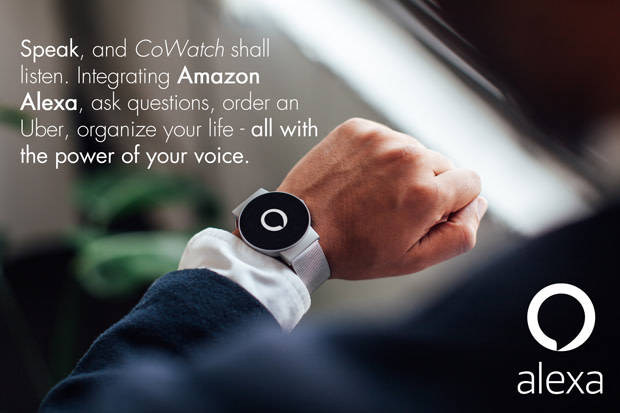
Speak, and CoWatch will listen. With a built in speaker - and as the first smartwatch to integrate Alexa, Amazon's cloud-based voice service, you can ask for a traffic report, control connected devices, make a phone call to a friend, order a taxi to your home, pay your bills, and so much more.

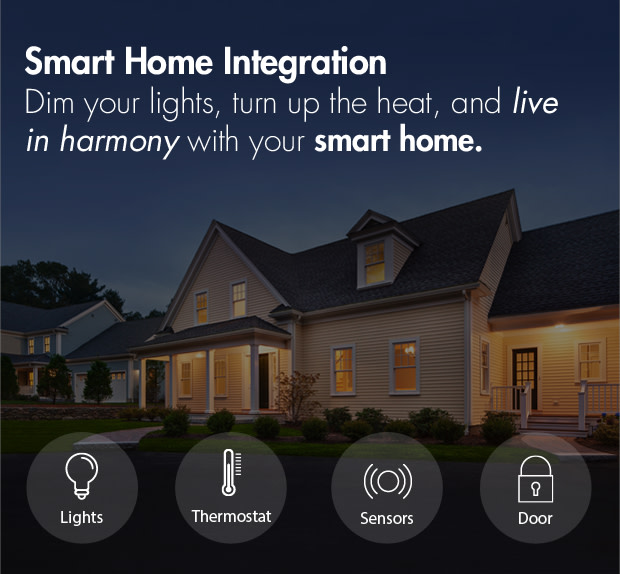
Your smart home is at your fingertips. The power of Bluetooth 4.1 and cloud connectivity lets you dim the lights, check on your car, turn up the heat, and interact with the devices, products, and services that matter to you most.

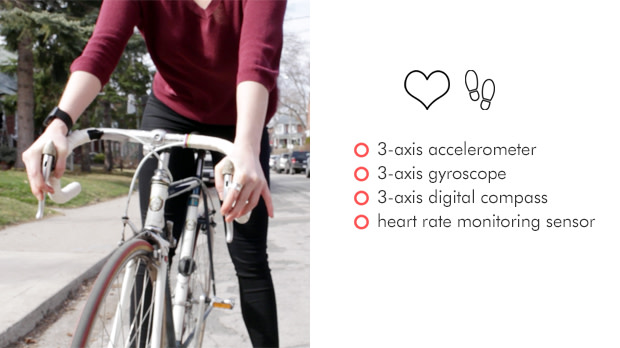
Friends encourage friends to stay healthy. Be proactive and let CoWatch sweat the small stuff. CoWatch can track your calories burned, count your steps, even monitor your heart rate after and during a workout. Using a nine-axis accelerometer, digital compass and gyroscope, as well as heart rate sensor andvibro motor, CoWatch can help you keep track of every move.


Maximize efficiency and connect with a simple touch. Send a quick response through text message, check your emails, connect to your favourite streaming service and turn on your favourite song - CoWatch can do it all.



CoWatch unites classic watch design with state of the art technology. Elegantly constructed and at a price point that competes with other luxury brands, you have a choice between carbon black or mineral silver stainless steel, with a fracture-resistant zirconia composite ceramic body for excellent wireless signal. The vivid super AMOLED 400 x 400 high-resolution touch screen has an interchangeable and reactive watch face, catering to your mood, experience, and look, from day to night.


Hand pick the watch face that matches your mood. Professional? Minimalist? Fun? We've created a variety of watch faces to choose from that anyone can enjoy. Switch on the fly and be ready to pair with any ensemble or occasion.
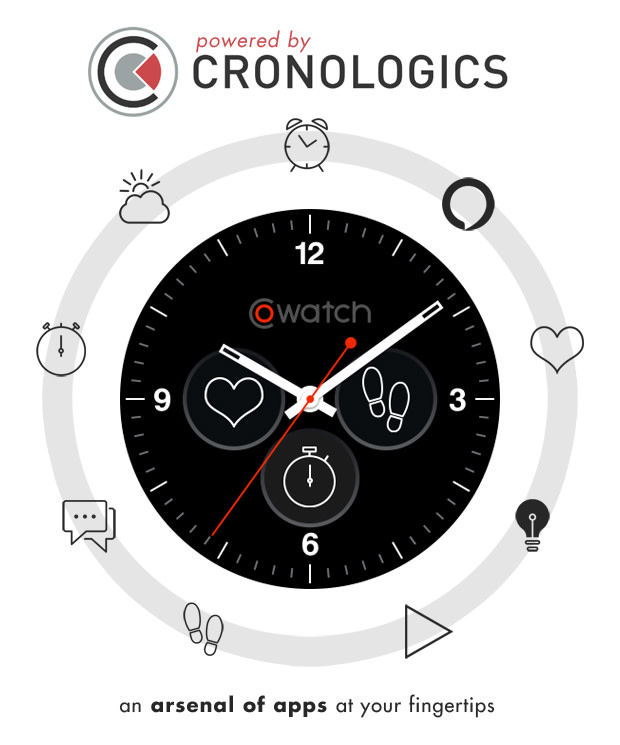
iOS? Android? You're covered. CoWatch is designed to improve, not complicate your experience. CoWatch compliments your favourite mobile device, carefully passing information back and forth to save you time. CoWatch is compatible with both iOS (9.0 and above) and Android (5.0 and above).

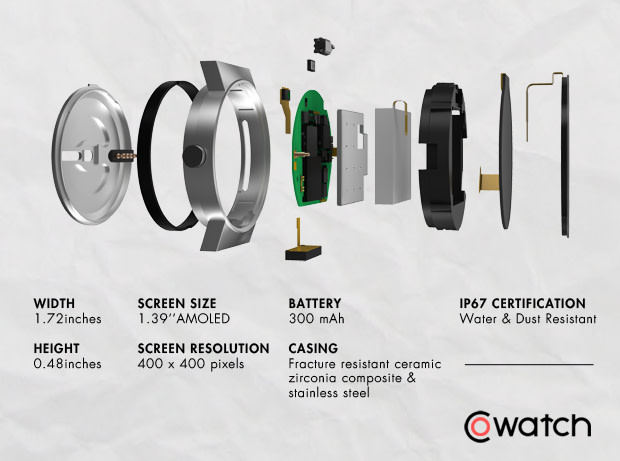


With up to 32 hours of battery life in an always-on mode, CoWatch works as hard as you do - from dusk 'til dawn. Connect directly to the magnetic charging cradle and within one hour, you'll be guaranteed up to 70% battery capacity, working as fast and efficiently as your CoWatch.





__________________________________________________


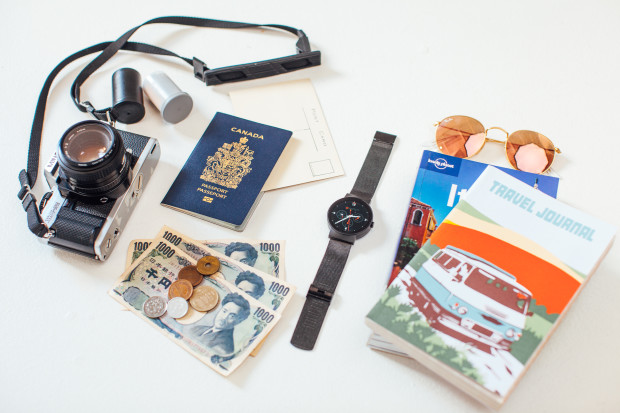
We at iMCO and Cronologics have worked tirelessly over the past year and a half to bring the CoWatch to life. Our desire has always been to create a smartwatch that's not only high-quality, but affordable and accessible to everyone. We’re ecstatic to have achieved our goals with the CoWatch!
Production is already underway with our first 800 watches, all of which will beshipped to our early adopters within 3 weeks of the end of this campaign! Early supporters will also have exclusive access to production updates, and exclusive pricing on any additional perks and accessories that roll out during the campaign. Mass production will continue throughout the campaign cycle to fulfill all Indiegogo orders and beyond.

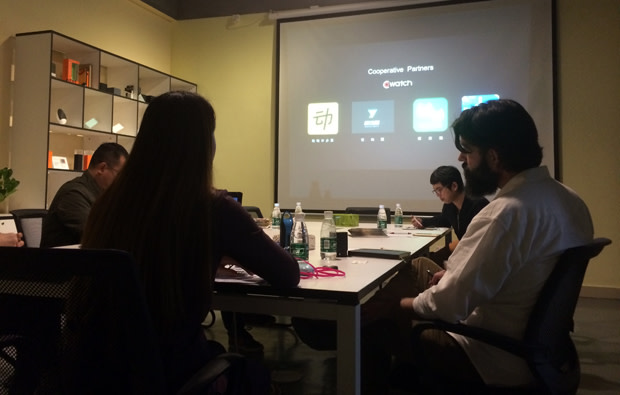
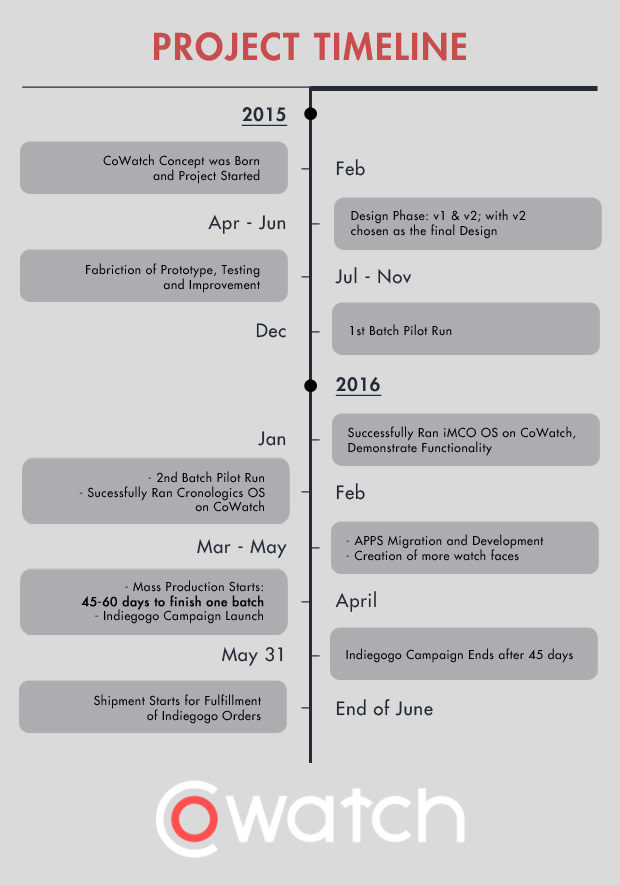
The time is NOW to join the smartwatch revolution - with CoWatch by your side!

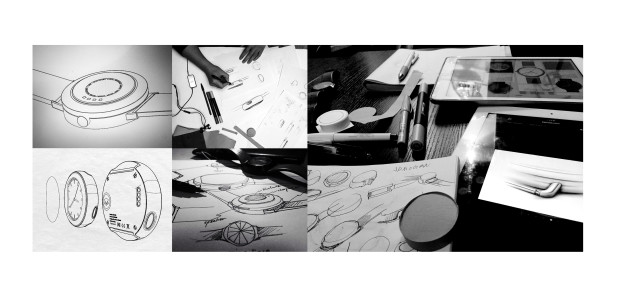
PRODUCT
Is the CoWatch water resistant?
Yes - it's water/splash resistant, though it shouldn't be submerged intentionally!
I have small wrists, can I still wear the CoWatch?
Yes! The adjustable clasp means the CoWatch can fit everyone. The band is a standardized 22mm watch band.
Can I change the watch straps easily?
Yes - all watch packaging will come with an easy-to-use clasp adjuster allowing you to change the straps quickly and easily.
Will the CoWatch be available in any other colours?
Right now there are no plans to deviate from carbon black and mineral silver cases, however coloured stainless steel and leather bands allow you to customize the watch further.
Is setting up my CoWatch easy?
Yes, your CoWatch will arrive with a easy-to-read manual with step-by-step details on how to set up.
How do I choose the color of my CoWatch?
Once the campaign has been completed, we'll be in touch to help you choose your color - choosing between Carbon Black and Mineral Silver.
Will there be a leather band be available for my CoWatch?
Keep your eyes peeled, as we have a lot of surprises and perks coming up throughout the campaign!
Warranty info?
All consumers will have a 1 year limited warranty on parts and labor. Shipping and delivery cost is to be paid by the end user.
BUYING & SHIPPING
When will I get my CoWatch?
The first 800 orders will receive their CoWatch in June 2016. Orders after that point will receive their watch within 90 days.
What if my CoWatch is broken during shipping or has defects at arrival - can I send it back?
CoWatch offers a 1-year limited manufacturer warranty. With repair centers in North America and Asia, we will ensure your product is taken care of quickly. Free shipping is provided to and from the repair center within 30 days from the date your product is received.
How can I pay for my order?
Indiegogo accepts Paypal and credit card payments online from Visa, Mastercard, AMEX, and Discover.
What are shipping costs?
Depending on where you are located shipping costs will vary. Shipping costs range from a flat rate of $10 USD in USA, Canada, and China, to $25 USD internationally.
https://www.indiegogo.com/projects/cowatch-the-most-affordable-high-end-smartwatch#/
2:55 PM









